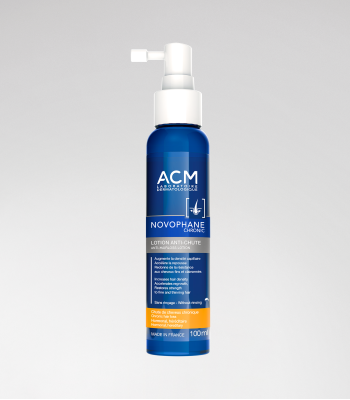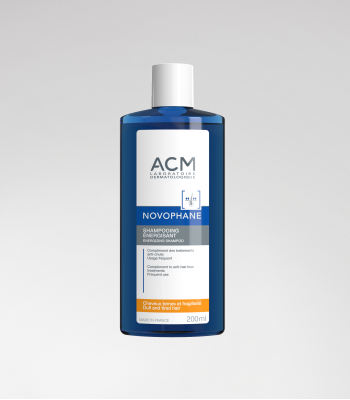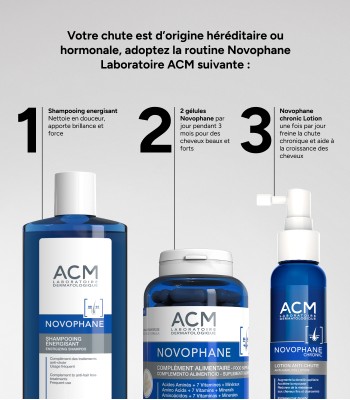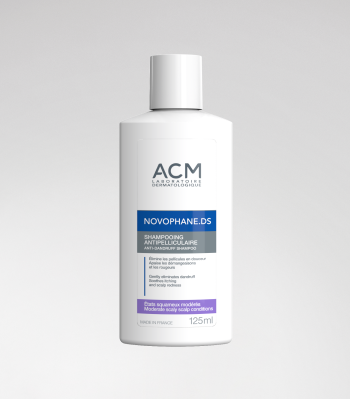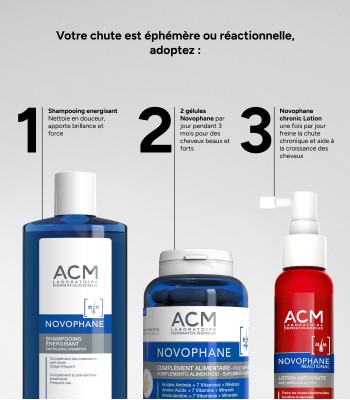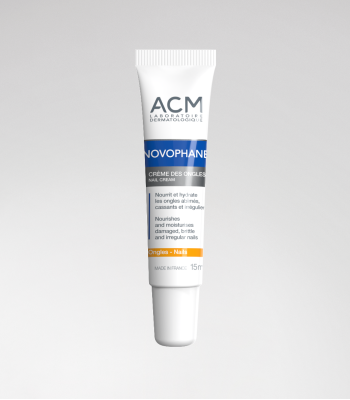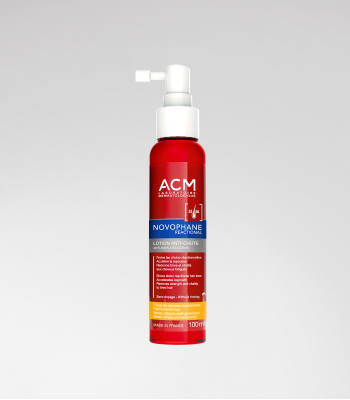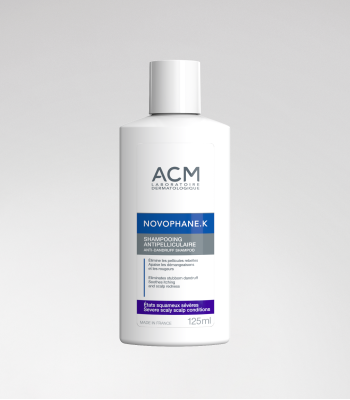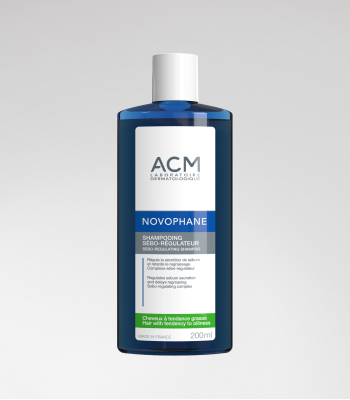What is female alopecia and how can it be treated?
6 minWhile finding a few hairs on your hairbrush or pillow is nothing out of the ordinary, hair loss can become a cause for concern when it occurs at a faster rate, continues for a prolonged period and results in a loss of hair density. It is very common for women to see a dermatologist due to alopecia, and diagnosis by a doctor is often necessary to identify an effective treatment protocol that will slow down hair loss and stimulate regrowth. Causes, treatments, haircare routines to combat hair loss, and more. This article summarises everything you need to know about female alopecia.

What are the different types of female alopecia?
Alopecia is the general term used to describe hair loss, whatever the cause. There are several types of alopecia and women can also be affected by bald spots or diffuse hair loss.
Androgenetic alopecia in women
While 1 in 2 men over 50 suffer from androgenetic alopecia (also referred to as baldness) according to the French Society of Dermatology’s website, women can also be affected by progressive hair thinning: the Vidal medical information website states that 1 in 5 women over 40 experience this type of hair loss.
Baldness occurs in men and women in different ways:
- In women, it mainly affects the top of the head and central parting.
- The hair does not recede at the hairline.
- It never results in complete baldness and there is always some hair left, even if it is very sparse.
Chronic telogen effluvium in women
In contrast to female pattern baldness, chronic telogen effluvium is characterised by diffuse hair loss, meaning that all areas of the scalp are affected. Although it initially resembles classic telogen effluvium, which is usually triggered by an event such as childbirth, infection or psychological trauma, this is a chronic condition that persists over a long period of time (over 6 months).
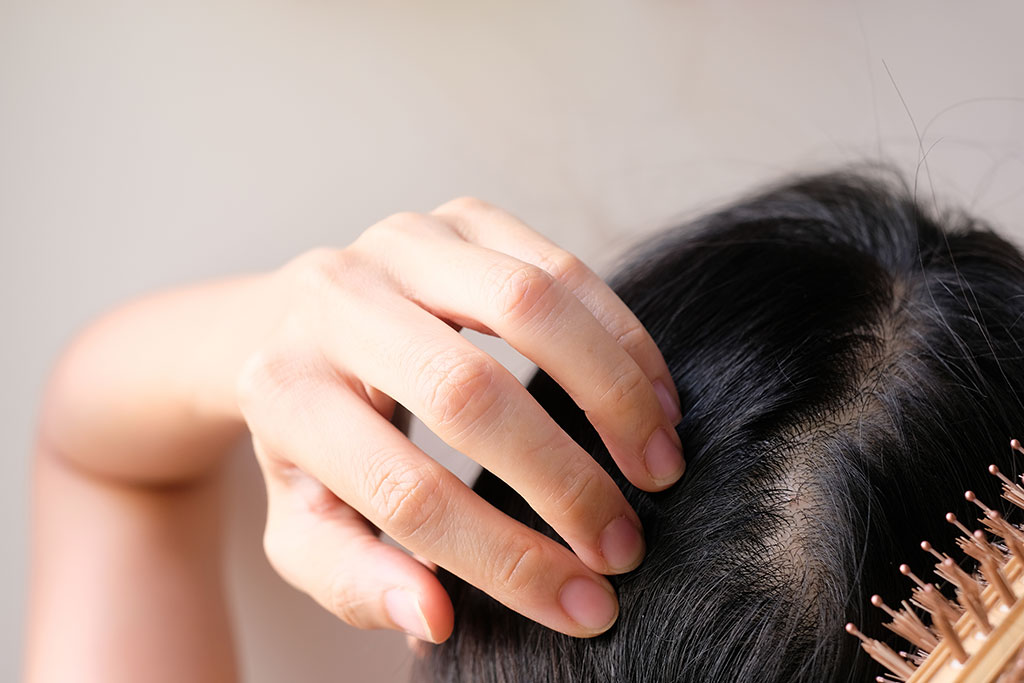
Female alopecia caused by medical treatments
Taking certain drugs can lead to female alopecia. Hair loss occurs a few months after starting treatment and lasts until the patient stops taking the treatment or the doctor prescribes a different drug.
Drug-induced alopecia is a side effect of:
- the contraceptive pill;
- antidepressants;
- thyroid treatments;
- blood thinners;
- acne drugs containing retinoids;
- anabolic steroids;
- anticonvulsants;
- anti-cholesterol treatments; and
- drugs for treating high blood pressure.
Chemotherapy-induced female alopecia
Chemotherapy and radiotherapy can disrupt the hair growth phase and lead to rapid hair loss. According to the French National Cancer Institute’s website, alopecia generally occurs two to three weeks after the start of cancer treatment, with the majority of hair loss occurring between the first and second month. It most commonly involves hair on the scalp, but the condition can affect hair anywhere on the body (including the eyelashes and eyebrows).
Traction alopecia in women
Traction alopecia is caused by consistently wearing hairstyles that tug on the scalp, thus leading to progressive hair loss. It is also referred to as “chignon alopecia”, in reference to the very tight hairstyle worn by ballet dancers.
In addition to a “chignon” hairstyle, ponytails that are too tight, braids that are too heavy and hair extensions, as well as the frequent use of a straightening or curling iron and frequent straightening, can also damage the roots and cause traction alopecia.
What are the causes of female alopecia?
To successfully treat alopecia, i.e. to slow down hair loss and stimulate regrowth, the potential causes must be identified. We recommend seeing a dermatologist to obtain a diagnosis and get some initial answers.
Female alopecia caused by hormones
Male sex hormones, known as androgens, can cause alopecia in women with a genetic predisposition or who suffer from a hormonal imbalance. DHT, a substance derived from testosterone, accelerates and shortens the hair growth cycle. Hair becomes finer and thinner.
Other exogenous factors can make women prone to alopecia, such as taking the contraceptive pill or hormone replacement therapy for the menopause.
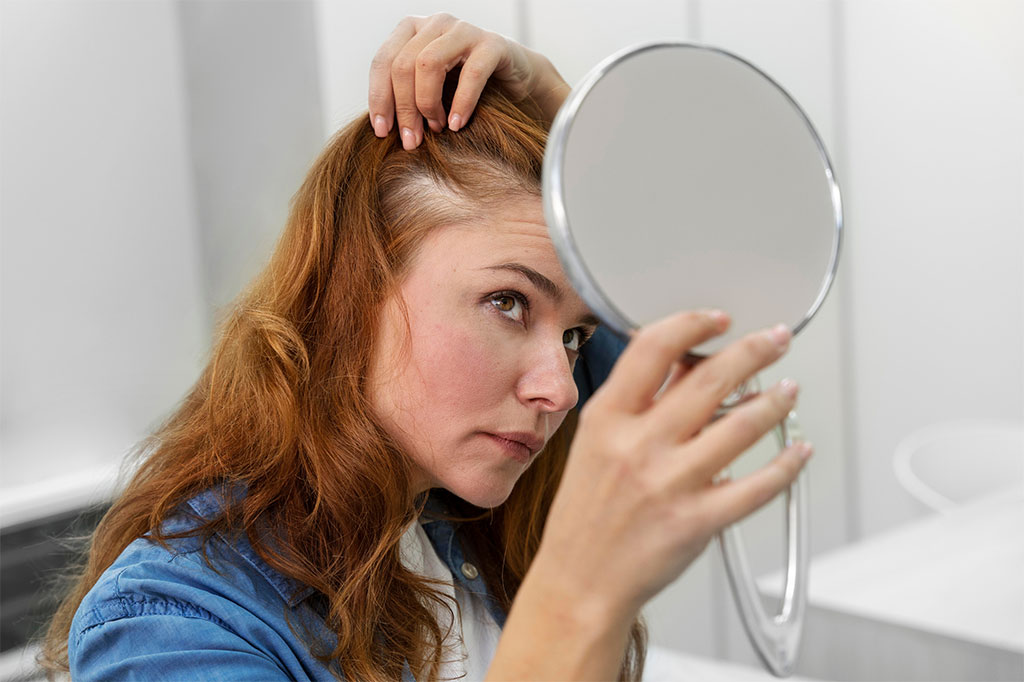
Female alopecia due to nutritional deficiencies
Female alopecia can be caused by dietary deficiencies in iron, zinc and vitamins (B12, D, E, etc.), nutrients essential for maintaining good general health, as well as dense, strong, shiny hair. Thus, hair loss is often the result of a dietary imbalance, weight loss or dieting.
Female alopecia due to illness
Certain health disorders can bring about female alopecia. These include Polycystic Ovary Syndrome (PCOS), congenital adrenal hyperplasia, cutaneous lupus erythematosus, thyroid disorders, untreated diabetes and even depression.
Ringworm and alopecia areata, two diseases that affect the scalp, can also be responsible for hair loss.
How is female alopecia treated?
There are a number of effective treatments for female alopecia once the cause has been identified.
Find out more about the various therapies available to treat female alopecia below.
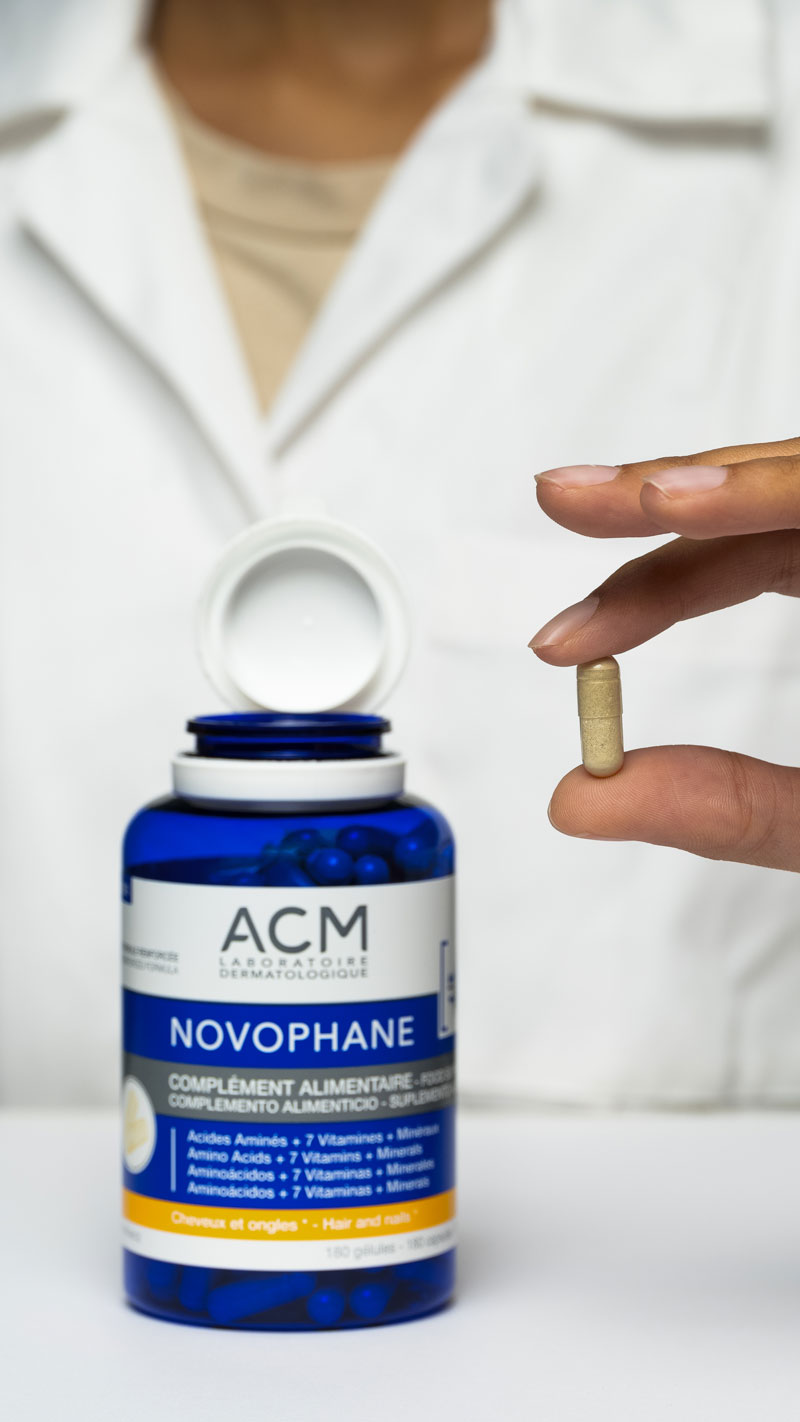
Dietary supplements to strengthen hair
If a blood test confirms that a patient has iron and/or zinc deficiencies, a change of diet may be advisable (more red meat, egg yolks, oysters, etc.), in addition to taking food supplements that provide the body with all the nutrients required for stronger, fuller hair.
Minoxidil lotion to treat female pattern baldness
Minoxidil lotion is the standard treatment for androgenetic alopecia in women. Depending on the prescribed dosage, the lotion is applied to the scalp once or twice a day, and the first visible results for hair loss and regrowth can be seen after 3 to 4 months of daily use.
Theses lotions are designed for long-term use, as once the patient stops taking the treatment, the effects wear off.
Additional hair solutions to improve hair appearance
In addition to medical treatments, other effective solutions are available to help conceal hair loss and improve its appearance.
Patients may opt for solutions to improve the way their hair looks, such as wigs, prostheses or even densifying powders. Undetectable to the naked eye, these customised hair solutions are designed to provide a more natural look, especially in cases of diffuse baldness.
Phototherapy to stimulate hair follicles
LED phototherapy (also known as “light therapy”) for hair is one of the various treatments that can help combat female hair loss and promote regrowth. An LED lamp (or headset fitted with light-emitting diodes) is placed a few centimetres away from the scalp and set to a specific wavelength to stimulate scalp cell activity.
For optimal results, around ten phototherapy sessions are recommended, with 1 to 2 sessions per week, followed by a maintenance session every month.
What is the best haircare routine to prevent hair loss in women?
To curb the development of female alopecia and promote regrowth, we recommend adopting a haircare routine to prevent hair loss. In addition to using a special shampoo that will gently cleanse your hair while stimulating the scalp, you can also apply a no-rinse, anti-hair-loss lotion to your roots once a day, which will help increase hair density, strengthen weakened hair and promote regrowth.
We recommend our NOVOPHANE range,
specialising in hair and nails.
- Pack
- Out-of-Stock

